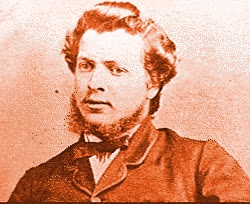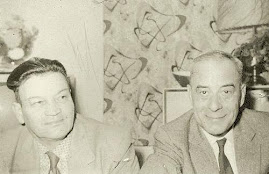Medicine Hat News
Trial moved to living room
ALEX MCCUAIG
amccuaig@medicinehatnews.com
In a scene not likely to be repeated in Medicine Hat court history, a judge, stenographer, clerk, News reporter and four lawyers crowded into a witness’ small living room to hear testimony Monday afternoon.
It was a fitting scene for the trial of three Métis men charged with breaking provincial hunting regulations that has so far focused on history while trying to make it as well.
In Monday’s hearing, Métis elder Henry Aaker, 79 – testifying from his home due to a medical condition – told the court how his home was once part of a thriving community called Saratoga Park.
The house – hidden away as much as a home could be in a city of 60,000 – lies along a bike trial which follows Seven Persons Creek between Dunmore Road and Scholten Hill.
In an almost surreal scene, the court entered the four metre by seven metre home surrounded by a corral in disrepair, abandoned garden, several vehicles and sheds.
“You said four (people) not 44,” said Aaker in a comical moment as the courtroom entered his home.
Depending on the source, the home is the last of a “half-breed colony” or squatters community which once had at least 20 to 30 homes stretching from Dunmore Road to the South Saskatchewan River.
In the cramped living room with the walls filled with family photos and First Nations as well as Western artwork, Aaker testified with a bowl of potato chips and glass of cola in front of him.
He testified that he moved to Saratoga Park from Montana when he was three weeks old after his parents split up.
The lawyer for the accused, Jason Madden, asked Aaker what life was like growing up in Saratoga Park.
“A picnic,” he responded.
“Everybody had a lot of fun.”
He went on to describe group social events within the community that included music played with violins, guitars and banjos while people danced the jig. He told the court about being married in a nearby church and went to Elm Street School.
Aaker said at the Elm Street School there would be numerous fights with other children.
“Kids would get smart and pretty soon you’d be battling it out,” Aaker said.
“Smart about what?” asked Madden.
“They’d be calling you half-breeds. After they got a few lickings, they’d smarten up.”
Madden went on to ask what had happened to the other homes in the area.
“When the people died off, they would come in with a bulldozer, clean it up, bury the stuff and that would be the end of it,” Aaker responded.
“Why would they do that?” Madden asked.
“I don’t know.”
Pointing towards the top of Scholten Hill, Aaker testified that is where he used to hunt and said he trapped weasel, mink and muskrat along the nearby creek. He also described fishing in the South Saskatchewan River and recalled his mother used to gather native vegetation for medicinal remedies.
“When you went hunting, did you get a licence?” asked Madden.
“No, why would I want a licence for,” Aaker responded.
“Did you ever get charged?”
“No, they never caught me.”
Madden asked if Aaker spoke an aboriginal language.
“Yea, English,” he responded before saying he could speak the Métis language Michif – a mixture of Cree and French.
Lead attorney for the province Tomas Rothwell declined to cross-examine Aaker.
The first session of testimony in the trial is expected to end today with several more witnesses from the Métis community.
Two more sessions concentrating on historical documents are expected before the end of the year





No comments:
Post a Comment